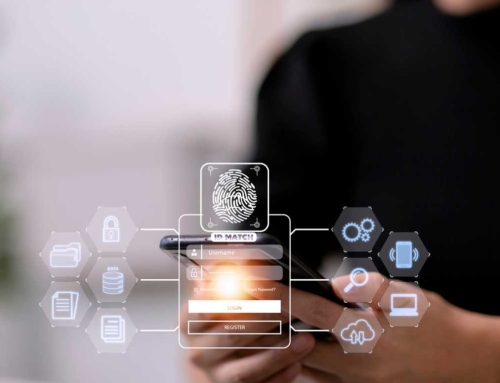How to Integrate Ransomware Defense into DevSecOps
The Rising Need for Ransomware Defense in DevSecOps
As software development cycles accelerate, security must evolve just as quickly. Ransomware—a form of malicious software that encrypts files and demands payment for their release—has become one of the most disruptive cyber threats facing organizations today. While many teams adopt DevSecOps to embed security into development from the start, ransomware defense requires specific consideration. Integrating targeted protections into the DevSecOps framework ensures that innovation and speed don’t come at the cost of security and resilience.
Understanding the Ransomware Risk in Development Pipelines
Modern ransomware campaigns are not limited to end-user devices or production environments—they increasingly target software supply chains. Attackers may infiltrate code repositories, compromise build servers, or insert malicious components into deployment pipelines.
This risk makes the CI/CD process itself a high-value target. A single breach can corrupt software releases, disrupt operations, and damage customer trust. By identifying these risk points early, development and security teams can design controls that address ransomware threats before they have a chance to take hold.
Core Principles of Ransomware Defense in DevSecOps
Integrating ransomware defense into DevSecOps is most effective when guided by several core principles:
-
Shift Security Left – Integrate protective measures early in the development cycle to detect risks before they reach production.
-
Automate Where Possible – Use automated scanning, testing, and monitoring to minimize human error and maintain consistent defenses.
-
Continuously Monitor – Implement real-time anomaly detection to spot potential ransomware activity as it happens.
-
Test and Validate – Regularly simulate attacks and run recovery drills to ensure systems respond as expected.
Embedding Security in the CI/CD Pipeline
The CI/CD pipeline is the heart of modern software delivery, making it a critical control point for ransomware defense. Security checkpoints can be added at every stage:
-
Pre-Commit Scanning – Automated tools check code for known vulnerabilities or malicious patterns before it’s merged.
-
Build Environment Hardening – Restrict access to build servers, require multi-factor authentication, and ensure dependencies come from trusted sources.
-
Runtime Protections – Apply container security policies and runtime behavior monitoring to identify suspicious activity post-deployment.
By treating the pipeline as both a delivery mechanism and a security boundary, teams reduce the likelihood that ransomware can be introduced or spread.
Continuous Security Monitoring and Threat Assessment
Once code is in motion, real-time visibility becomes critical. Continuous monitoring systems can detect signs of ransomware activity, such as unexpected file encryption or unusual outbound network traffic. Threat assessment should be ongoing, with metrics tracked over time to evaluate how well defenses are performing and to inform adjustments.
This vigilance enables security teams to respond faster, often stopping an attack before it reaches critical systems.
Ransomware-Specific Defense Tactics for DevSecOps
While general security best practices are valuable, ransomware requires targeted countermeasures. These can include:
-
Regular, Verified Backups – Stored offline or in immutable storage to prevent ransomware encryption.
-
Behavior-Based Detection – Identifying suspicious patterns beyond known malware signatures.
-
Least-Privilege Access Controls – Reducing the ability of ransomware to spread by limiting user and process permissions.
-
Network Segmentation – Isolating critical systems to slow or block lateral movement.
These measures, when built into DevSecOps workflows, create layered defenses that address both prevention and recovery.
The Human Element: Training and Awareness
Even the most advanced tools are only as effective as the teams using them. Security awareness training should extend beyond dedicated security staff to include developers, testers, and operations personnel.
By understanding how ransomware operates—and where it might enter the development cycle—teams can proactively identify and eliminate vulnerabilities. A shared security mindset is a hallmark of a mature DevSecOps culture.
Measuring and Improving Your Ransomware Defense
DevSecOps thrives on iteration, and ransomware defense is no different. Setting measurable goals—such as mean time to detect (MTTD) and mean time to recover (MTTR)—allows teams to track progress and demonstrate value.
Post-incident reviews, regular audits, and updated playbooks ensure that lessons learned translate into stronger defenses over time.
Future-Proofing Against Emerging Threats
Ransomware tactics evolve constantly. DevSecOps teams should regularly evaluate and adopt new security technologies, integrate threat intelligence feeds into their pipelines, and maintain flexible response strategies. The goal is to design processes that adapt to change while maintaining stability, speed, and security.
Integrating ransomware defense into DevSecOps is not just a technical necessity—it’s a business imperative. By combining automation, continuous monitoring, targeted countermeasures, and a culture of shared responsibility, organizations can protect their development pipelines and safeguard the trust of their customers.
FAQ
What is ransomware and how does it impact the DevOps cycle? ▼
Ransomware is a type of malicious software that encrypts files on a target system, demanding payment for the decryption key. In DevOps, an attack can disrupt the continuous integration and continuous delivery (CI/CD) pipeline, affecting development, deployment, and operational processes. Furthermore, it poses risks to the integrity and availability of applications and the infrastructure they rely on.
Why is DevSecOps important for ransomware defense? ▼
DevSecOps integrates security practices into the DevOps cycle, thereby ensuring that security considerations are not an afterthought but a primary focus throughout development, delivery, and deployment. By doing so, it significantly reduces vulnerabilities that ransomware could exploit and prepares the team to detect and respond to threats swiftly.
How can we embed security in the CI/CD pipeline to prevent ransomware? ▼
Security tools and practices should be incorporated at every stage of the CI/CD pipeline, from code analysis in the initial stages to monitoring and protecting operational environments. For example, employing static application security testing (SAST) and dynamic application security testing (DAST) can help identify vulnerabilities early on, reducing the potential for ransomware exploitation.
What is continuous security monitoring, and why is it crucial for ransomware defense?▼
Continuous security monitoring is the practice of continuously analyzing and assessing the security state of IT environments. It’s crucial for ransomware defense as it helps in early detection of anomalies and potential threats, allowing for immediate remediation and limiting the scope of an attack.
Can you describe some ransomware-specific defense measures in DevSecOps? ▼
Ransomware-specific defense measures include, but are not limited to, endpoint protection, email filtering, access controls, regular backups, and incident response planning. Moreover, you must ensure that these measures are updated to counter new ransomware tactics continuously.
How can our organization emphasize security training and awareness? ▼
To emphasize security training and awareness, you can conduct regular training sessions, simulations, and updates on the latest ransomware threats and proper security practices. Furthermore, aim to establish a security-first mindset by rewarding secure coding practices and recognizing team members who contribute to your cybersecurity efforts.
How do we measure the success of our DevSecOps ransomware integration? ▼
Success can be measured by analyzing the reduction in the number of vulnerabilities, the speed and effectiveness of response to threats, and the lack of successful ransomware attacks. Additionally, conducting regular audits and reviewing key performance indicators (KPIs) related to security can provide insights into the integration’s effectiveness.
What steps can we take to future-proof our DevSecOps against ransomware? ▼
To future-proof DevSecOps, you must stay informed of the latest ransomware tactics and adapt your strategies accordingly. This includes implementing advanced threat intelligence tools, keeping all software and dependencies updated, and adopting a proactive approach to threat hunting and incident response.
Is there a specific approach to handle ransomware threats for cloud-based environments in DevSecOps? ▼
Yes, cloud-based environments require a tailored approach that includes cloud-specific security measures such as robust identity and access management, encryption of data at rest and in transit, and leveraging the security features inherent to cloud service providers. Continuous assessment of cloud configurations to avoid misconfigurations and vulnerabilities is also essential.
What role does incident response planning play in ransomware defense in DevSecOps? ▼
Incident response planning is a critical component of ransomware defense, as it outlines the procedures to follow during a ransomware attack, thereby ensuring quick and organized action to contain and mitigate the threat. A robust incident response plan also facilitates recovery, helping to restore operations with minimal downtime efficiently.







